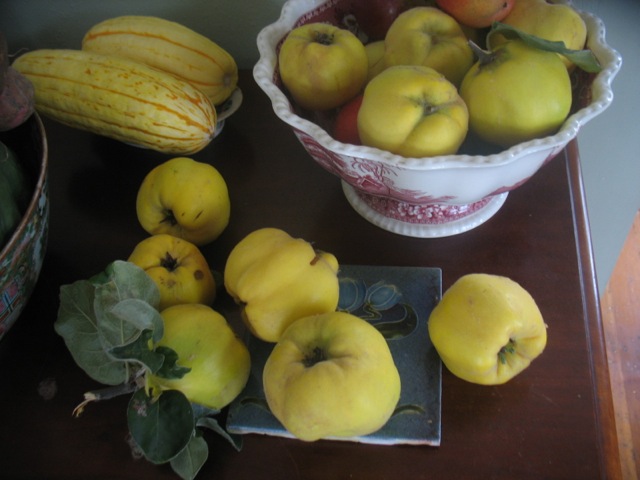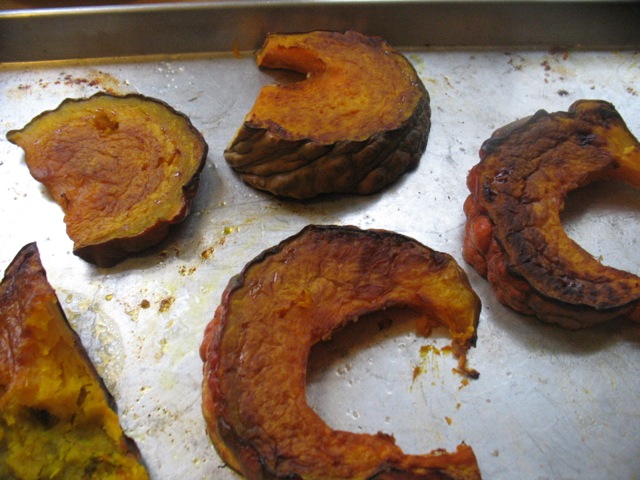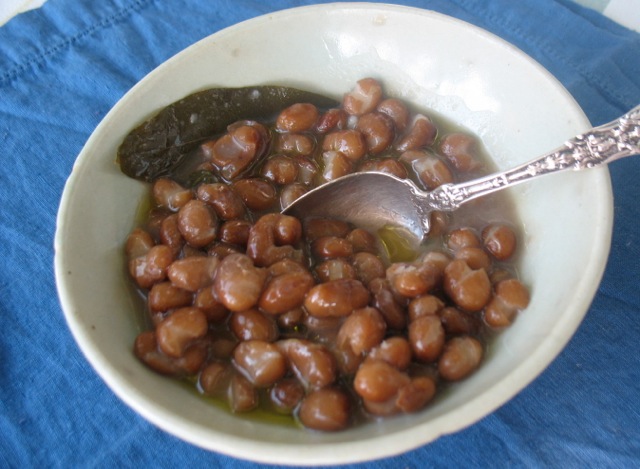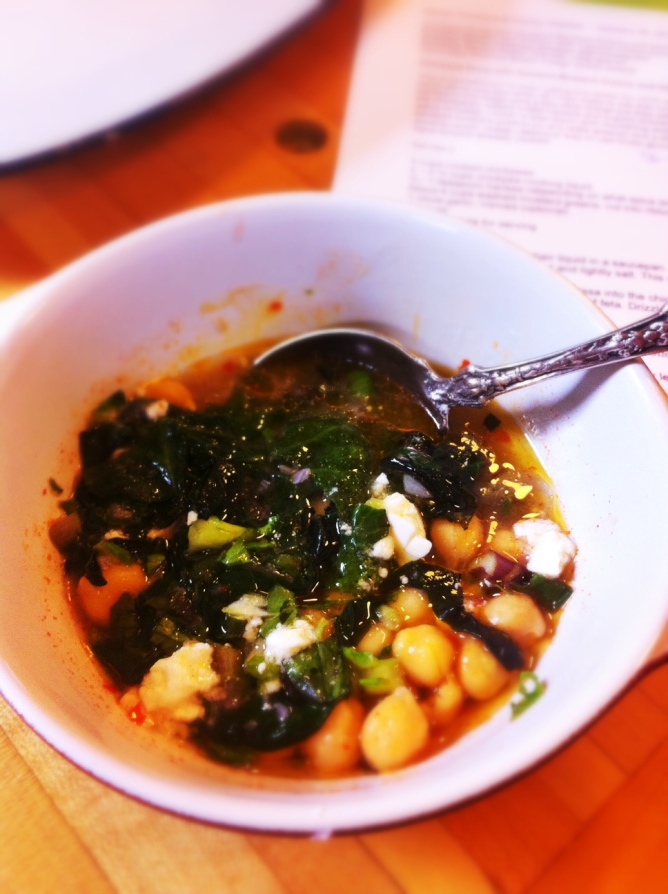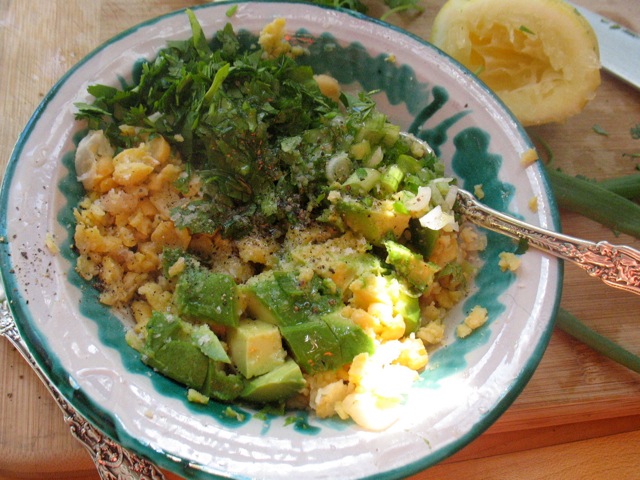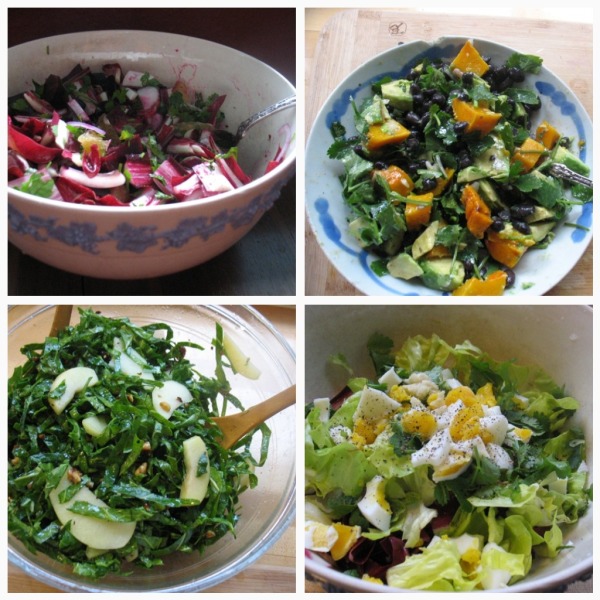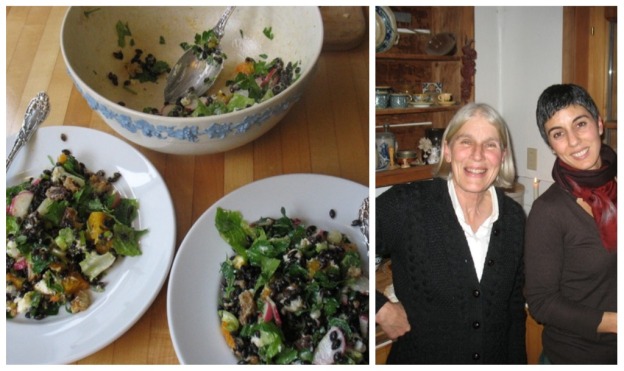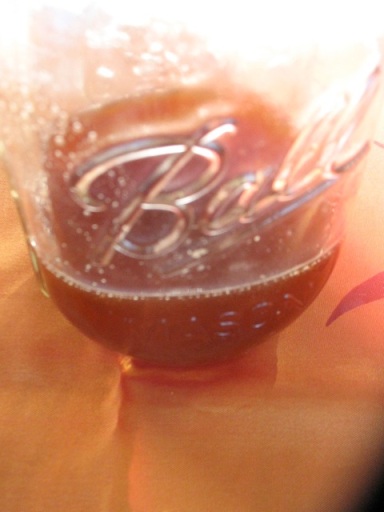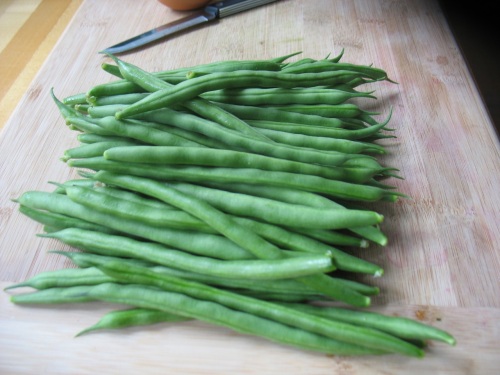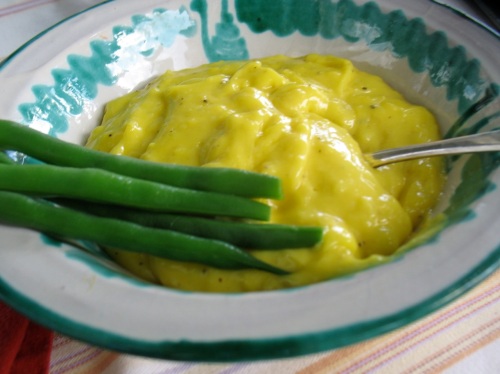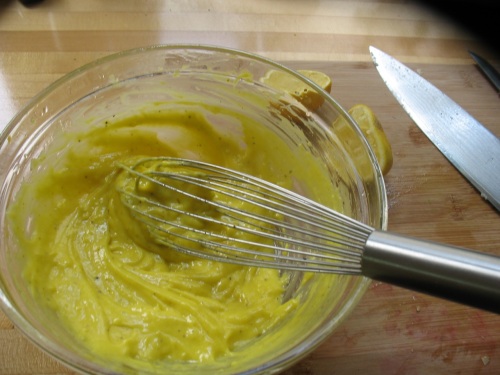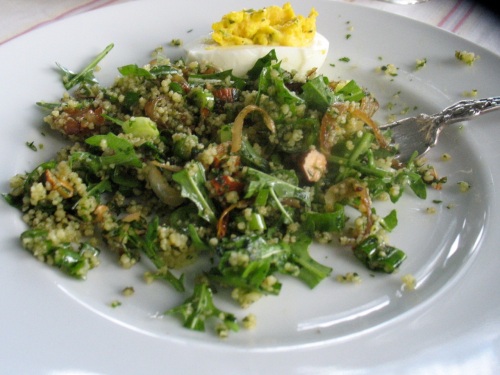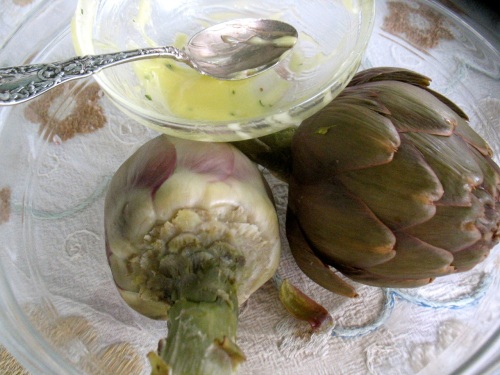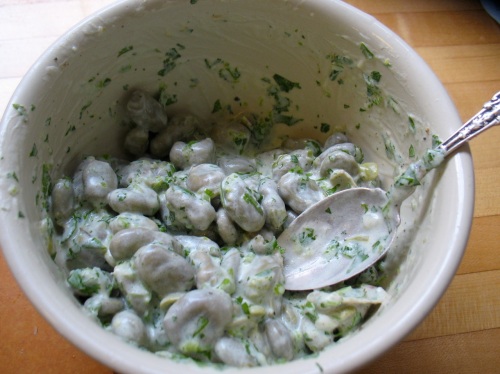Quince, Squash, Beans – Simple Fall Pleasures (& a New Class)
When you cook and adapt and create recipes every day it’s easy to get swept up in the many variations and tricks that are certainly fun but not always necessary. And a few of the teaching projects I’m currently working on are forcing me to strip things down to the very simplest preparations, to really practice what I preach– that cooking can be liberating, a way to frankly make life less complicated rather than more; that cooking can be simple, creative and just plain fun, not to mention delicious, economical and convivial.
It still feels like fall has just begun since the weather here in Oregon is warm and glorious, however, the produce at the markets clearly marks the passing of summer and early fall. The peppers are gone and cabbage is here and so is winter squash in its many sizes, shapes, and flavors. And this year’s crop of dry beans is arriving and my quince tree is loaded. This week I was feeling overwhelmed by the fairly labor intensive ways to preserve quince (my dwarf tree produced 50 quince this fall!) so I decided to simply bake the whole unpeeled fruits in a covered pot, as I was already roasting beets. And voila, after an hour the quince had become sauce and I just needed to pick out the cores and stir in some honey.

The beauty of this season’s produce is intoxicating and I’m reminded that even this time of year, the hard, grainy quince and the unwieldy, weighty winter squash can be prepared and enjoyed with ease. And in the case of the latter it can be sliced and baked and enjoyed with nothing more than salt and maybe a little olive oil or maybe some salsa verde.
And then there are beans! The humble, wonderful and under appreciated dry bean I love so much. I just ordered 30 lbs of pinto beans from one farm and will be loading up on other varieties from another soon. Nothing makes me feel more secure than big jars of beans in my pantry. Soaked and then cooked with a bay leaf a clove of garlic and chunk of onion and then left to cool in their broth, . . .then a sprinkle of salt and drizzle of oil and lunch is served.
And put the three together–wedge of squash, bowl of beans and quince sauce for dessert-simple indeed!
And speaking of fall and what the changing temperatures and products mean for the kitchen, I’m co-teaching a class with Ellen Goldsmith who will bring her experience with Chinese culinary philosophy to our evening of conversation over dinner and would love to have you in class! Details below:
A Taste of Autumn: East meets West at the Dinner Table
Are you wondering how to make your autumn cuisine delightful, delicious, and inspired? Join Ellen Goldsmith and Katherine Deumling for an evening of conversation and eating just for autumn. What does this season’s food tell us about our bodies, our vitality, and our appetites? Katherine will bring her cook-with-what-you-have approach to delicious, produce-driven dishes for this abundant but cooler time of year.
Ellen will offer an overview of the Chinese medicinal and seasonal culinary philosophy as it applies to the autumn season to enliven your cooking.
Infuse your fall season of cooking and eating with a conversation over supper. We will discuss:
• The elements of a vibrant seasonal meal
• To utilize local and seasonal produce in a new way
• The benefits, from a Chinese medicine perspective, of cooking with the season
• How tastes of different foods energize your cooking and you!
You will receive materials, including the evening’s recipes.
When: Tuesday, November 5, 6:30 – 8:30 pm
Where: Home of Ellen Goldsmith in Northeast Portland (Address available upon registration)
Ellen Goldsmith, licensed acupuncturist, brings a passion for cooking and food with over 25 years of experience practicing Asian medicine and teaching all about the vitality and potency of food through the lens of Chinese medicinal principles. She practices acupuncture, dietary therapy, Chinese herbs, body-mind health, and Mindfulness Based Stress Reduction at Pearl Natural Health in Portland. In addition, she shares her passion for transforming our lives through our health on her weekly podcast Health Currents Radio and as a board member at the National College of Natural Medicine, the oldest naturopathic medical school in the country.
